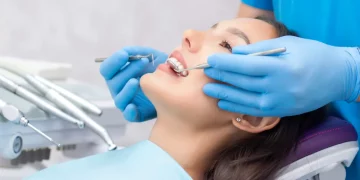Introduction: The Magic of Losing Teeth
Childhood is a tapestry woven with threads of wonder, curiosity, and the inexplicable thrill of milestones. Among these cherished moments, tooth loss stands out as a quirky yet significant rite of passage. For young ones, the wiggling of a loose tooth heralds the advent of a new chapter—one filled with the anticipation of a tooth fairy’s visit, a shiny coin under the pillow, and the promise of a grown-up smile. However, beneath the excitement lies a crucial biological process that marks the transition from primary to permanent teeth. Understanding and navigating this phase with care can ensure a healthy dental future for children.
The Natural Cycle of Tooth Loss
Primary teeth, often referred to as baby teeth, begin to erupt in infants around six months and continue to appear until around age three. These 20 little pearly whites serve as placeholders for the adult teeth, aiding in chewing, speech development, and, importantly, guiding the permanent teeth into their correct positions. As children grow, their bodies prepare for the next stage: the shedding of baby teeth to make way for the stronger, more durable permanent teeth.
The process of tooth loss, or exfoliation, typically begins between the ages of five and seven and can extend until around age 12 or 13. It starts with the lower central incisors, followed by the upper central incisors, and progresses in a predictable pattern until all primary teeth have been replaced. This natural progression is orchestrated by the pressure exerted by growing permanent teeth pushing against their baby predecessors from beneath.
Signs and Management of Loose Teeth
Parents often notice the first signs of tooth loss when their child complains about a wiggling tooth or reports discomfort while eating. It’s essential to educate children about the normalcy of this process to avoid unnecessary anxiety. Here are some practical tips for managing loose teeth:
- Gentle Handling: Encourage children to avoid tugging or pulling on loose teeth, as this could cause pain, bleeding, or infection. Instead, let nature take its course.
- Soft Foods: During this phase, incorporating softer foods into meals can ease discomfort. Avoid crunchy, sticky, or hard items that might dislodge the tooth prematurely or cause injury.
- Oral Hygiene: Maintaining good oral hygiene is crucial. Use a fluoride toothpaste and a soft-bristled toothbrush to gently clean around the loose tooth and adjacent areas.
- Comfort Measures: If the tooth is particularly loose or painful, offering over-the-counter pain relievers like ibuprofen (with a doctor’s recommendation) can provide temporary relief.
- Monitoring: Regular dental check-ups are vital. The dentist can monitor the progress of tooth loss, address any concerns, and provide professional advice tailored to your child’s needs.
The Role of the Tooth Fairy: A Cherished Tradition
The tooth fairy, a beloved figure in many cultures, adds a magical element to the tooth-losing experience. Children eagerly anticipate her visit, often placing their tooth under their pillow before bedtime, hoping for a small reward in return. This tradition serves as a gentle reminder of the importance of losing teeth and encourages children to embrace the change positively.
Parents can use this opportunity to reinforce good dental habits by tying the tooth fairy’s visit to dental milestones, such as consistent brushing and flossing. It’s a fun way to make oral health a priority and instill lifelong habits.
Addressing Concerns: When to Seek Professional Help
While most tooth loss follows a predictable pattern, there are instances where early intervention might be necessary. Parents should watch for the following signs and seek dental advice promptly:
- Premature Loss: If a primary tooth falls out too early due to trauma or decay, it can affect the eruption path of the permanent tooth, leading to misalignment.
- Persistent Teeth: Sometimes, primary teeth refuse to budge even when the permanent tooth is ready to erupt. This condition, known as retained teeth, may require removal by a dentist to prevent overcrowding.
- Abnormal Eruption: If a permanent tooth grows in an abnormal position or if there are visible signs of misalignment, orthodontic evaluation might be recommended.
- Pain or Infection: Persistent pain, swelling, or redness around a loose tooth could indicate an infection or other dental issues that need immediate attention.
Professional dental care ensures that tooth loss progresses smoothly, addressing any complications that might arise and preserving the health and alignment of your child’s teeth.
The Transition to Permanent Teeth: A Time for Celebration
The loss of primary teeth marks a significant milestone in a child’s life, symbolizing growth, resilience, and the emergence of their unique personality. As each tooth makes its way out, it leaves a space for something stronger, more durable, and reflective of their journey towards adulthood.
Celebrate these small victories with your child. Whether it’s through the tooth fairy tradition, a special outing, or simply by acknowledging their bravery and excitement, these moments will be cherished memories for both of you.
Moreover, use this period as an opportunity to instill a lifelong love for dental health. By modeling good oral hygiene habits, visiting the dentist regularly, and encouraging a positive attitude towards dental care, you can help your child build a foundation for a healthy, confident smile.
Conclusion: Navigating Together
Childhood tooth loss is more than just a physical transformation; it’s a journey filled with emotional and psychological milestones. With care, understanding, and a bit of magic, we can guide our children through this exciting phase, ensuring they emerge with a smile that shines brightly into their future.
By embracing the natural process of tooth loss, addressing concerns promptly, and celebrating each step of the journey, we can help our children develop healthy dental habits and a love for their smile that lasts a lifetime.













































Discussion about this post